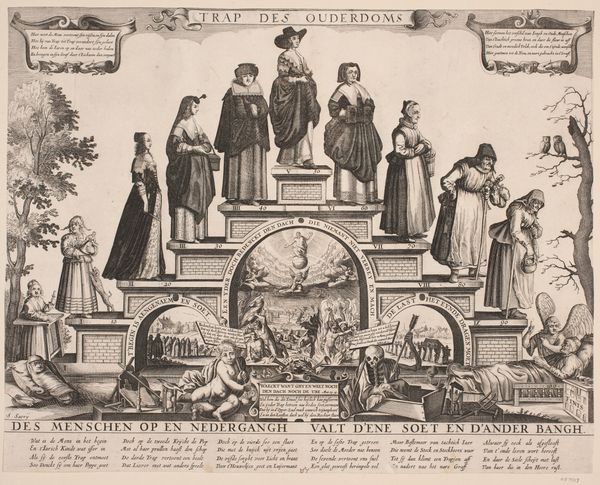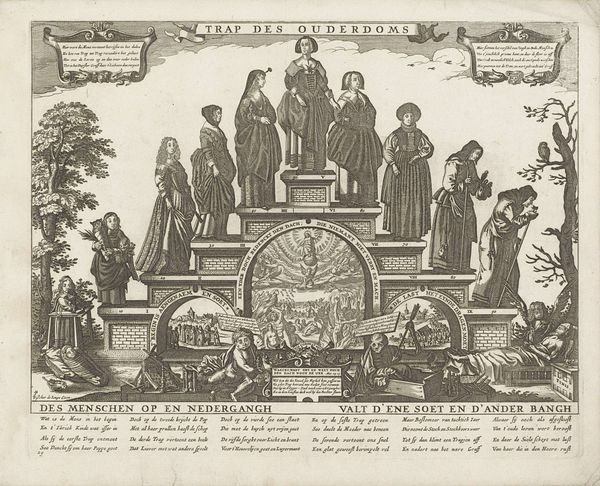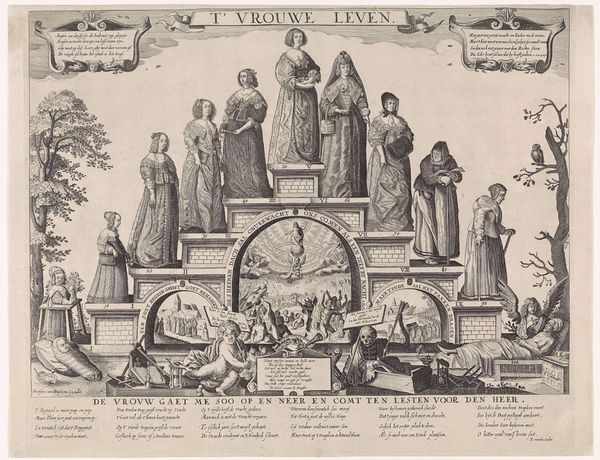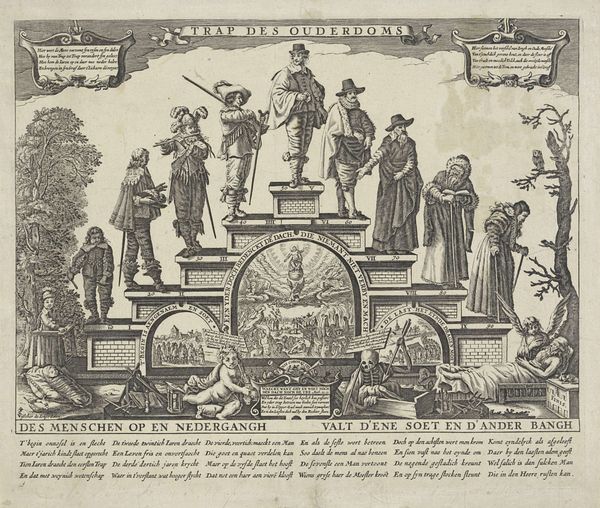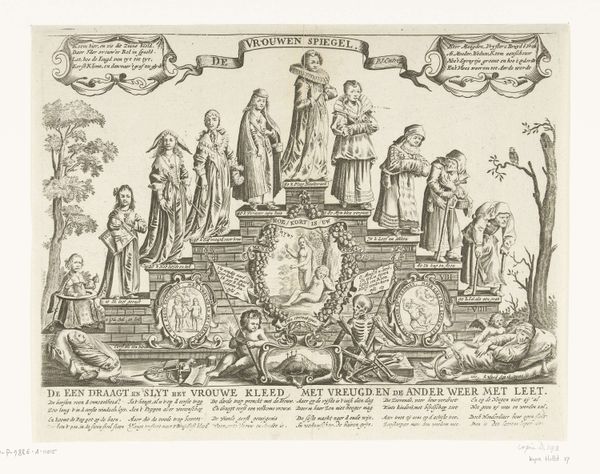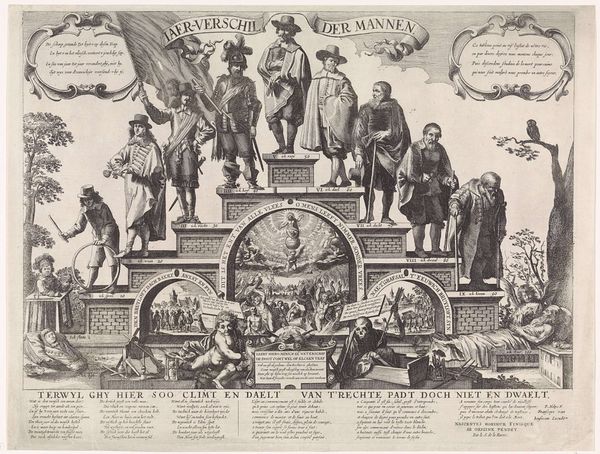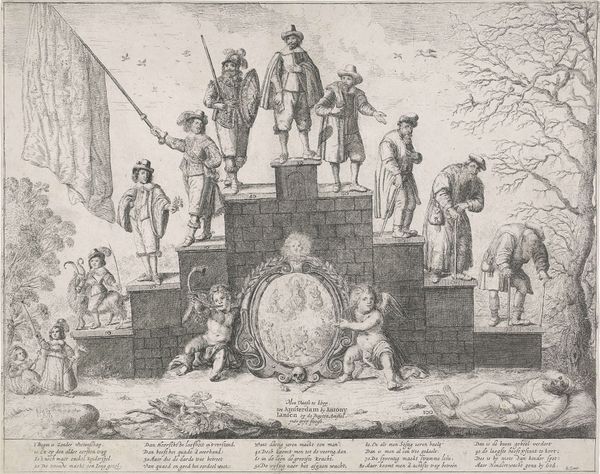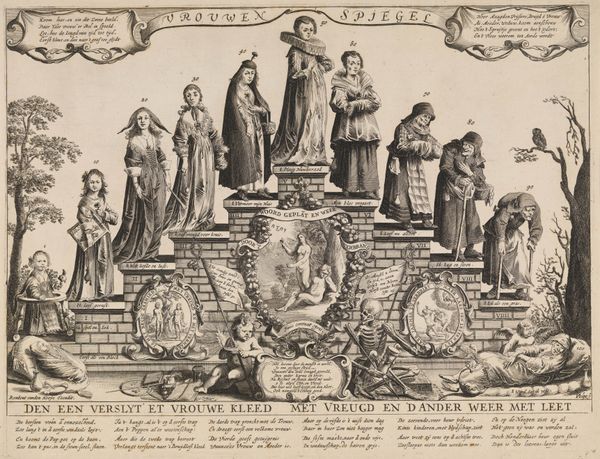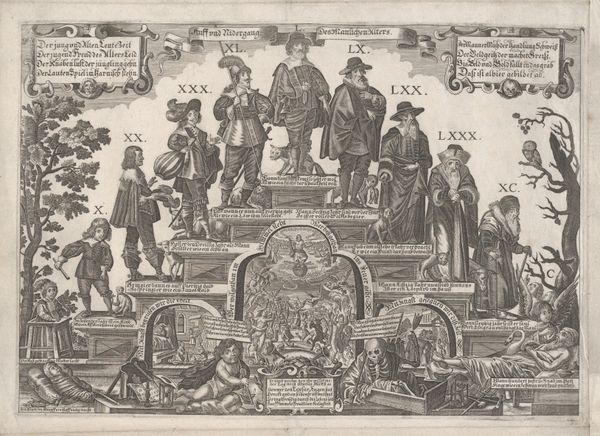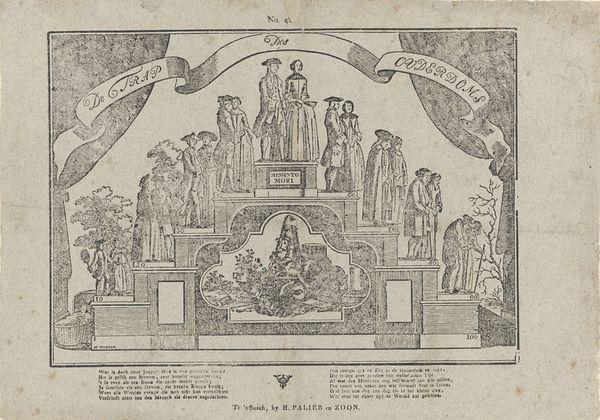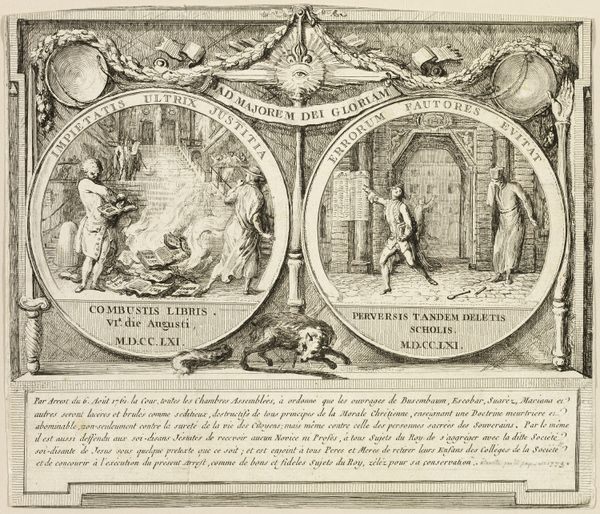
print, engraving
#
portrait
#
allegory
#
baroque
#
dutch-golden-age
# print
#
figuration
#
line
#
genre-painting
#
history-painting
#
engraving
Dimensions: height 423 mm, width 528 mm
Copyright: Rijks Museum: Open Domain
Editor: Pieter Hendricksz. Schut's engraving, "Trap des Ouderdoms met vrouwen" made sometime between 1612 and 1652, really struck me with its almost mathematical precision. The allegorical figures ascend and descend a staircase, it seems to be charting a life cycle. What stands out to you, particularly with regard to its form and structure? Curator: Precisely. Note how the artist organizes the composition into a structured series of steps, each distinctly numbered and populated with female figures embodying different stages of life. Focus on the bilateral symmetry and linear precision; the artist guides our eyes systematically through the artwork, doesn't he? What do you observe about the use of line and how it dictates the mood? Editor: It's almost like an infographic! The stark lines give it a clear, intellectual feel, not necessarily warm or inviting. It's like a diagram more than a emotional piece. Curator: Yes, a deliberate choice, given the somber theme. Examine how the artist uses line to differentiate between the idealised, almost sculptural figures at the peak of the staircase versus the decaying figures towards its base. Also consider the calculated use of textual elements integrated within the engraving. How does it function formally in the overall structure? Editor: It almost boxes in the images, but guides the eye. It reinforces that formal, instructional feeling, it is there for precision not just ornamentation.. This analytical approach, dissecting its composition and linear qualities, reveals so much more meaning. Thanks! Curator: Indeed. Through attention to these structural and material elements, we unlock a deeper appreciation of the artwork's intended meaning.
Comments
No comments
Be the first to comment and join the conversation on the ultimate creative platform.
